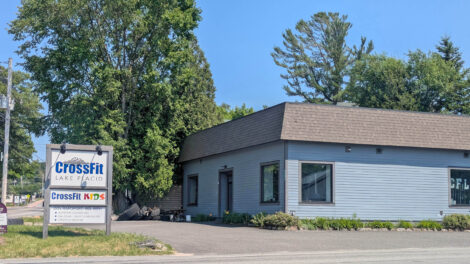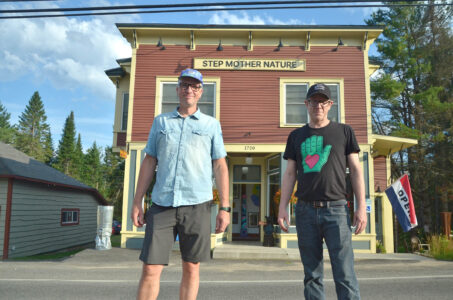Cuomo addresses Adirondacks in State of the State
Over-hiking, fishing, flooding make list of governor’s priorities
Gov. Andrew Cuomo’s vision for the future of the Adirondacks includes over-hiking solutions, more fish and cell service, fewer floods and algal blooms and a new lodge at Whiteface. He described all this at his 2020 State of the State address Wednesday.
—
Little shout-out
—
As Cuomo began his speech he recognized some important people in the audience. One was North Country state Sen. Betty Little, R-Queensbury, who started her last legislative session in that seat Wednesday.
He said she is the longest-serving female, Republican senator in the state.
“A school teacher who answered the call to service over 30 years ago with principled decency and compassion,” Cuomo said. “That is what Betty Little is all about.”
—
Promises repeated
—
Cuomo reiterated the state’s $14 million commitment to rebuilding the Mid-Station Lodge at Whiteface Mountain, which burned down Nov. 30 in a fire of unknown origin. It is unclear how much of the cost will be paid by the state and how much by insurance.
He also reiterated his goal to, “bring 100% cell service to every corner of our great state.”
—
Restore Mother Nature
—
Most of the Adirondack issues Cuomo tackled are to be funded by the Restore Mother Nature program.
Calling it “the nation’s most aggressive program for habitat restoration and flood reduction” and promising “measurable improvements” by 2030, Cuomo said the program will be partially funded by a $3 billion Environmental Bond Act which, if approved by legislators, will be put to a public vote November 2020.
The program then will allow the state to sell bonds paying for infrastructure-based environmental projects.
—
Overuse group
—
The State of the State book says the three busiest trailheads in the High Peaks saw a 78% increase in registered hikers between 2007 and 2017. The program tasks the Adirondack High Peaks Strategic Planning Advisory Group, formed in November, with deploying sustainable trail crews to make trails more durable to increased use and to develop new visitor flow solutions to better manage traffic and hikers.
It also proposes public education programs teaching stewardship practices.
—
Fishing increase
—
The program aims to make New York a “top state” for recreational fishing through investment in fish hatcheries and improvements to the state’s network of fishing access sites. It has goals to triple walleye fingerling production, produce an additional 500,000 trout and salmon, raise 100,000 cisco for native fish restoration and bolster development of a hardier strain of brown trout.
—
Algal blooms and
water revitalization
—
The program instructs the state to work with Clarkson University and the SUNY College of Environmental Science and Forestry to mitigate or eliminate the algal blooms plaguing Lakes Champlain and George. The plan includes $9.4 million in grants to upgrade the Lake George wastewater treatment plant.
“We are also thrilled to see the Governor closing the gap between what it will cost to rebuild Lake George’s wastewater treatment system and what the 890 citizens of Lake George can afford,” Adirondack Council Executive Director William Janeway wrote in a press release. “The lake is an important part of the Lake Champlain watershed. … Its health sets the tone for the waters into which it flows.”
The program plans to revitalize fish and wildlife habitats with the Conservation Corridors Program, which aims to restore up to 10,000 acres of freshwater wetlands and to reconnect or replant 10,000 miles of stream habitat. Methods include restoring freshwater and tidal wetlands, reclaiming natural floodplains, restocking shellfish populations, conserving more forest areas, right-sizing culverts and dams and expanding renewable energy.
—
Fighting flooding
—
In May the state launched the Lake Ontario Resiliency and Economic Development Initiative Commission, which is charged with developing a plan to upgrade flood control infrastructure and promote natural solutions along Lake Ontario and St. Lawrence River.
The program includes $300 million for the REDI, including funding for assistance to homeowners and business resiliency programs to move people and homes out of harm’s way.
—
Environmental group
reactions
—
“The $3 billion bond act is a decade’s worth of environmental spending in one year of the $300 million annual New York State Environmental Protection Fund,” Protect the Adirondacks Executive Director Peter Bauer wrote in a press release.
“We applaud the Governor for recognizing the need to address overuse, preserve and provide access to popular wilderness trails and destinations in the Adirondack Park, and build much-needed 21st Century infrastructure,” Janeway wrote.




